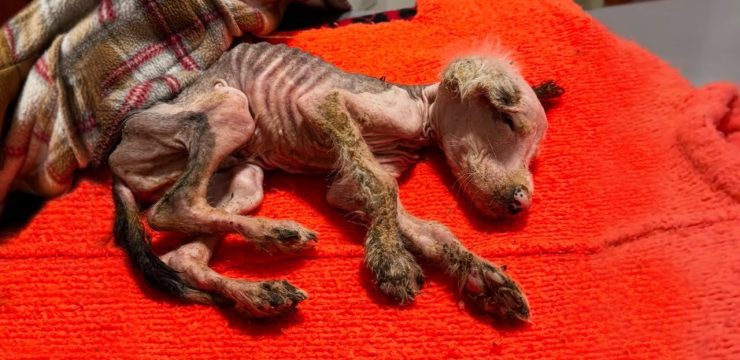Star Trek: The Next Generation wasn’t just a TV show—it became a cultural phenomenon that redefined science fiction on screen. Premiering in 1987, the series boldly ventured where no other show had gone before, blending the depth of Shakespearean drama with the thrill of interstellar exploration. By the time its finale aired in 1994, drawing over 30 million viewers, TNG had solidified its place as the gold standard for sci-fi storytelling. Yet, beyond its compelling plots and unforgettable characters, the series holds intriguing secrets that even devoted fans may not know.

Many of the cast members of Star Trek: The Next Generation forged lifelong friendships during their time on set. Patrick Stewart (Captain Picard) and Jonathan Frakes (Riker) are known for their close bond, often sharing laughs during conventions. Their friendship has stood the test of time, with frequent meetups and dinners, and their remarkable chemistry continues to shine whenever they’re together. LeVar Burton’s wedding in 1992 brought the cast even closer. Brent Spiner served as his best man, while Stewart, Frakes, and Michael Dorn acted as ushers, demonstrating the strong camaraderie that extended beyond the screen.
However, not all friendships started smoothly. Michael Dorn, who portrayed the stoic Klingon Worf, and Marina Sirtis, who played the empathetic Counselor Troi, initially clashed during the show’s first season. Sirtis has admitted that they didn’t get along at first, but over time, their undeniable chemistry brought them closer. Despite rumors of a romantic relationship, both have consistently maintained that their bond is purely platonic, though their enduring friendship remains one of the show’s most heartwarming legacies.
The costumes on Star Trek: The Next Generation may have looked futuristic, but they were far from comfortable. The original Starfleet uniforms were made of tight spandex that caused so much discomfort that Patrick Stewart’s agent threatened to sue Paramount if the actor suffered muscle or joint damage from wearing the one-piece suits. This threat prompted a costume redesign, and by the third season, the crew switched to more comfortable two-piece polyester uniforms.
Casting Patrick Stewart as Captain Picard wasn’t an easy decision. Gene Roddenberry, the creator of Star Trek, initially wanted a younger captain with a full head of hair. However, producer Robert H. Justman was so impressed by Stewart’s talent that he campaigned vigorously to secure him the role. After auditioning numerous actors, none of whom matched Stewart’s performance, Roddenberry reluctantly agreed. To increase his chances of being cast, Stewart wore a hairpiece during his initial meeting with Paramount executives. Ironically, the studio agreed to hire him, but only on the condition that he ditch the “ridiculous toupee.” When the cast was announced, some media outlets dismissed Stewart as an “unknown British Shakespearean actor,” prompting Brent Spiner to create a playful poster for Stewart’s dressing room that read, “Beware: Unknown British Shakespearean actor!”
Michael Dorn’s portrayal of Worf required an extensive makeup process that took up to two hours each day. However, maintaining Worf’s iconic look wasn’t without challenges. During the second season, the original prosthetic forehead used to create Worf’s distinctive appearance was stolen, forcing the production team to scramble to create a replacement. As a result, Worf’s forehead subtly changed, though most viewers didn’t notice the difference.
When the cast collectively sought a salary increase, Wil Wheaton, who played Wesley Crusher, was instead offered a promotion for his character. Producers proposed making Wesley a Lieutenant, to which Wheaton humorously responded, “So what should I tell my landlord when I can’t pay my rent? ‘Don’t worry, I just made Lieutenant’?” Interestingly, Wheaton holds a unique distinction—he is the first Star Trek actor and the only cast member of The Next Generation to have been born after the franchise began.
Geordi La Forge’s iconic VISOR, which allowed the character to see despite being blind, was a product of quick improvisation. The prop was made from a car air filter and a hair band, giving it its distinct look. However, wearing the VISOR was no easy task for actor LeVar Burton, who experienced daily headaches and discomfort from the device, which had to be secured tightly around his head. Despite plans to have Geordi undergo a medical procedure to restore his natural eyesight, producers decided to keep the VISOR, recognizing its significance as a symbol of empowerment within the disabled community.
During the show’s first season, long stretches of filming on the bridge set sometimes led to boredom for Burton, who occasionally nodded off or fell asleep. Thanks to the VISOR covering his eyes, no one could tell when he dozed off—adding a humorous behind-the-scenes anecdote to the series’ history.
Marina Sirtis, celebrated for her portrayal of Counselor Troi, has often received compliments for her youthful appearance even decades after the show ended. Reflecting on this, Sirtis humorously remarked that while fans often claim she hasn’t aged a bit, she knows it’s impossible after 25 years, though she believes the cast still looks pretty good. Interestingly, Sirtis originally auditioned for the role of Lieutenant Macha Hernandez, the ship’s security chief, while Denise Crosby was set to play Counselor Troi. A last-minute role swap changed their destinies, and Sirtis is grateful for the opportunity that shaped her career.
Wigs played a significant role in the appearance of several cast members. Marina Sirtis wore a wig throughout most of the series, with her natural hair styled around it to create Counselor Troi’s flowing locks. Gates McFadden, who played Dr. Beverly Crusher, also wore wigs during the early seasons. Her fine red hair struggled under the studio lights, leading to continuity issues that were resolved by switching to high-quality, real-hair wigs by Season 3. Sirtis admitted to feeling envious of McFadden’s luxurious wig collection, as she initially had to make do with a cheaper nylon fall. Fortunately, by Season 4, Sirtis received her own real-hair wig, bringing a welcome upgrade to her character’s appearance.
Jonathan Frakes’ character, Riker, became instantly recognizable thanks to his iconic beard, which he grew during the 1988 writers’ strike. Planning to shave it off before filming resumed, Frakes was surprised when producers asked him to keep it, believing the beard added character to Riker’s appearance. The beard quickly became a defining feature, even sparking playful comments from other characters, including the mischievous Q, who once joked that Riker was more fun before growing the beard.
Star Trek: The Next Generation also attracted celebrity fans eager to make guest appearances. Whoopi Goldberg, a lifelong Star Trek fan, famously pursued the role of Guinan and became a beloved recurring character. However, not all celebrity requests could be fulfilled. Robin Williams, another devoted fan, was offered a guest role in the episode “A Matter of Time” but had to decline due to scheduling conflicts while filming Hook (1991).
Interestingly, Patrick Stewart initially doubted the show’s success, so much so that he didn’t bother unpacking his suitcases during the first six weeks of filming. His skepticism proved unfounded, as Star Trek: The Next Generation became both a cultural and financial success. By 1992, each episode’s production cost nearly $2 million, while the studio earned approximately $90 million annually from advertising. With 178 episodes spanning seven seasons, the series not only left an indelible mark on television history but also cemented its legacy as a sci-fi masterpiece that continues to captivate audiences worldwide.





